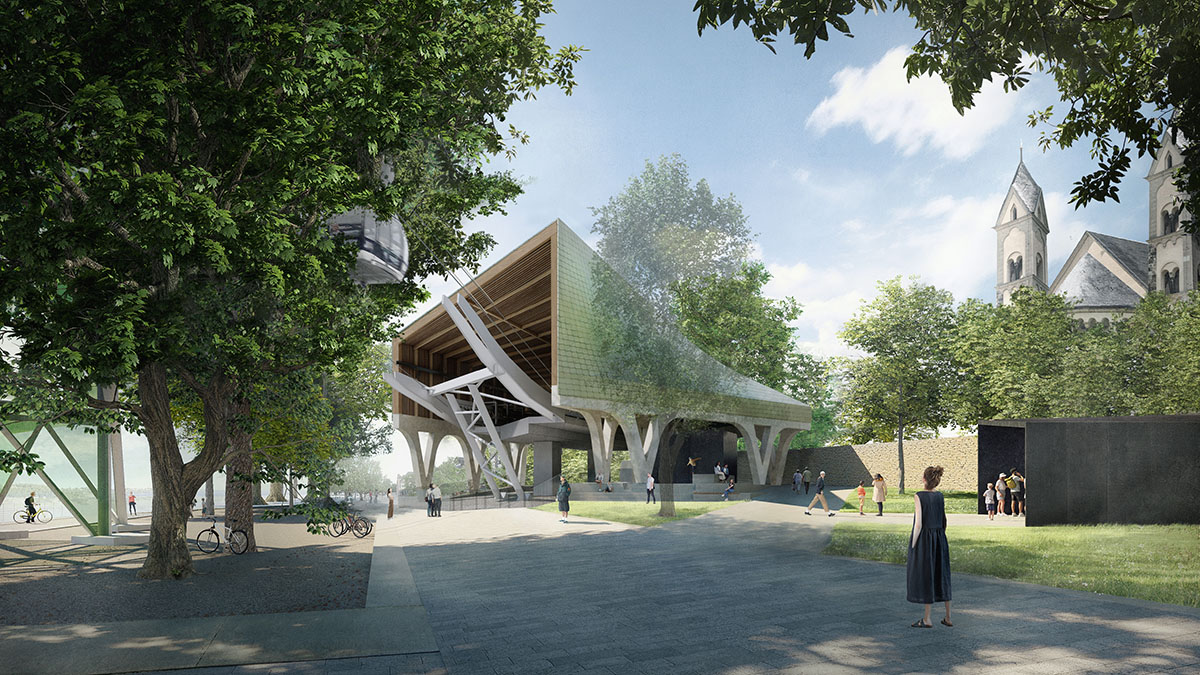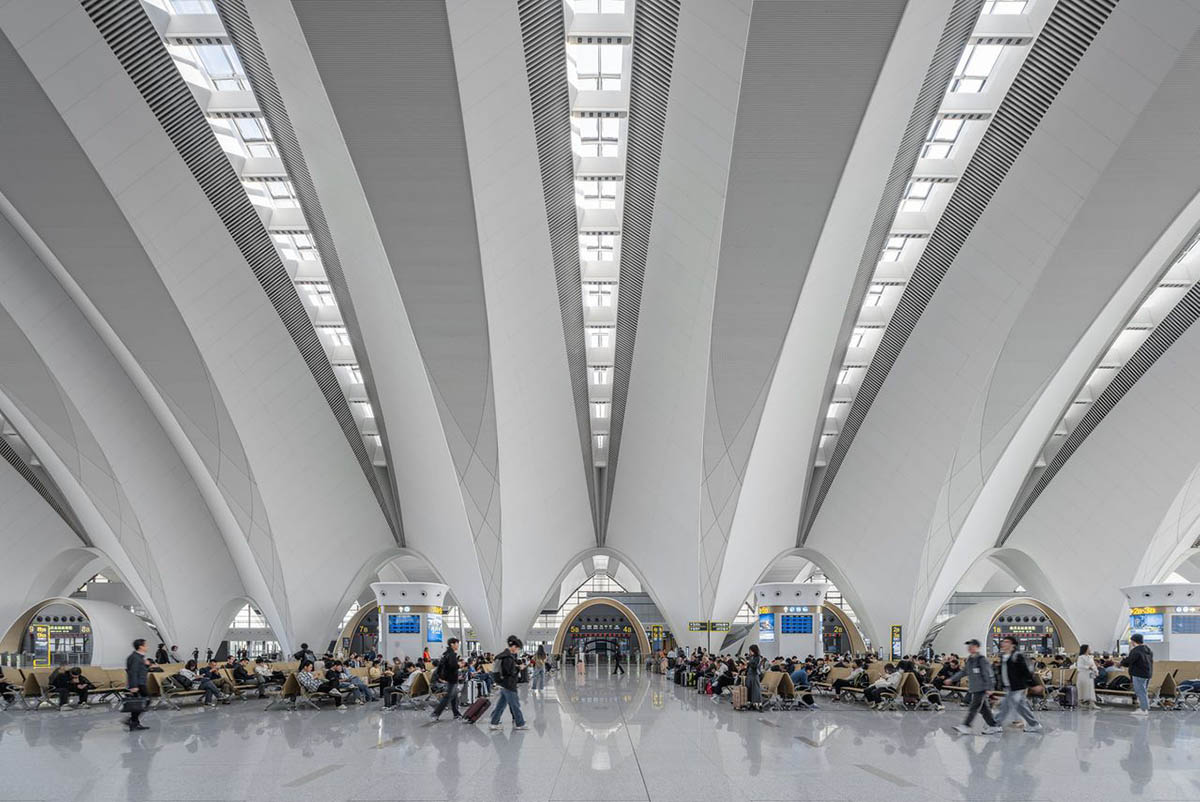
MAVENSEED.COM
Everything New in Blender 4.3
Blender 4.3 has just been released! The biggest updates are related to Grease Pencil, Sculpting, and Geometry Nodes, but, as usual, there are some improvements to all areas of Blender. In this article, well cover everything that you need to know before upgrading. Lets get into it!Modeling and UVsThe bevel modifier can now use any edge attribute as a bevel weight, which means that you can now have multiple modifiers that use different custom weights. For complex, hard surface objects, or for sharpening up subdivision surfaces, this will help you keep more of your modeling non-destructive. It also means you can control bevels via geometry nodes even though theres not yet a bevel node.Did you know that mesh material slots could also be assigned to the object rather than the mesh data? It makes it so that instances can have different materials. Well, now in 4.3, if you have a setup like that, the Copy Material to Selected command keeps that object relationship like you would expect.When it comes to UV unwrapping, there are some cases where Blenders Angle Based and Conformal operations can leave you with a little too much area stretching. The new Minimum Stretch algorithm, based on the SLIM algorithm, aims to improve that in some situations. Its great for tricky surfaces that need to be straightened or when you dont want to place too many seams.Sculpting and Texture PaintingWorking with sculpting, texturing, and other brushes in Blender has just gotten a bit more convenient now that brushes have been converted into assets, which can be shared between files. That means your favorite custom brushes will now always be there, and you dont have to keep importing them to every project. And now, instead of a large number of brushes in the toolbar, you can find the main types of tools in the toolbar and all of the brush presets for those tools in the Asset Shelf. You can search for and jump to brushes easily, even without the shelf, by clicking on the brush icon in the Tool Settings or using the Shift Space hotkey.All of the settings for the built-in brushes have been tweaked based on user-feedback, so you should find the out-of-the-box sculpting experience much more polished. Its faster too, thanks to many parts of sculpt mode having been rewritten. Entering sculpt mode can be around 5x faster, and brush evaluation itself is about 8 times faster.Also in Sculpt mode, the Voxel Size operator now works in relative mode by default, the lasso tools now have optional stroke stabilization, a polyline gesture can now be finished with double-click, sculpt mask is now accessible in node tools, and a new Mask from Boundary operator was added to modify mask values based on mesh or face set islands.Geometry NodesAnother new zone, called the For Each Element zone, has been added to Geometry Nodes. It allows you to perform operations on each vertex, edge, face, or other type of element of a geometry. This was already possible with the Repeat Zone, but the For Each Element zone simplifies the process and calculates the result significantly faster. Geometry Nodes can work with Grease Pencil objects now! From the perspective of Geometry Nodes, Grease Pencil geometry is made up of a list of layers and each layer is composed of curves. Layers, curves, and curve control points can all have custom attributes. When converting Grease Pencil to curves, each layer is turned into a separate curves instance. Similarly, instances are turned into layers when converting curves to Grease Pencil.Bakes from Geometry Nodes can now be packed into Blender files, which should make sharing files with lots of smaller baked data much easier. Bakes are packed by default, but its suggested to save the bake externally for very large bakes for better performance. Node group inputs in Geometry Nodes can now be associated with gizmos in the 3D viewport, so you can interact with your procedural setups in a much more natural way. The tricky thing about implementing gizmos is that it creates a two-way relationship between the value and the gizmo. Manipulating the gizmo affects the value, and manipulating the value affects the gizmo. So, gizmo connections are represented by two-way links. Instead of plugging the gizmo into the value you want to control (which was my first guess), you connect the group input to both a gizmo and the value. Geometry node groups can also have custom warnings, so that creators can notify users if some combination of inputs might not behave as expected.Geometries can also now be given names using the Set Geometry Name node, for easier organization and navigation in the Spreadsheet editor.A few new utility nodes have been added, such as the Hash Value, Integer Math, and Matrix Determinant nodes.Lastly, the Value to String node no longer has floating point issues when working with integers, node timings are more accurate, the Skip checkbox on the simulation zone is now hidden, and node tools can now work with masks in sculpt mode. Animation and RiggingOn the animation side of things, the properties editor now has an Animation panel for any data block that supports animation. In it, you can select which action the mesh, object, world, or whatever it is that youre animating, is using. That way, you dont have to open up the Action Editor to switch actions.The default motion path theme can now be set in Preferences. The Autokey indicator is now colored red when enabled, for extra clarity. You definitely dont want to forget to turn that off when youre finished! When inserting new keyframes, all other keys are now deselected. That should lead to fewer accidental transformations when working quickly in the dope sheet and graph editor. Bone selectors in the Properties editor now have an eyedropper, so you can easily select them from the 3D View or the Outliner. Grease PencilBlenders Grease Pencil has been completely rewritten for Blender 4.3. The main goal of this v3 was to improve performance and better integrate Grease Pencil objects into the rest of Blender. The first part of this is the integration with Geometry Nodes that Harry already talked about. Combining the powers of proceduralism with the hand-crafted beauty of illustration should lead to some amazing work from the community in the coming months. This new system also comes with some new features. You can now group layers together for better organization and easily managing visibility. The layers dropdown in Draw mode has been promoted to the top bar. Just like with sculpting, the Grease Pencil brushes use the new brush asset system. The Eraser tool now allows you to cleanly cut through strokes anywhere because it can create new points on the parts that it touches. Before, it could only get rid of existing vertices. You can now set the size of the brush in pixels according to the view or in proper scene units. The Simplify option is now measured in screen space pixels rather than in world space units. The Active Smoothing to reduce input jitter has been rewritten and is supposed to feel more accurate and less floaty. The Trim tool can now do multiple trims on the same stroke at the same time. In Edit Mode, theres a new Fill Gradient tool that can be used to adjust fill gradients in the active material. Grease Pencil operations are now multithreaded whenever possible, which should lead to a big boost in performance for heavy scenes. Layer adjustments are now evaluated before modifiers rather than after them. Do be aware that there is forward compatibility for Grease Pencil v3 but no backwards compatibility, so if you save a file in 4.3 you will not be able to use the Grease Pencil objects again in 4.2 or earlier. But anything saved in Blender 4.2 or earlier will be imported just fine into 4.3. Also know that a few features have not made the jump to this new system, including screen space stroke thickness (though you can now recreate that effect with Geometry Nodes), selection order for the interpolation tool in Edit mode no longer works the same, drawing guides have been removed for now but are expected to make a comeback later, and editing the strokes as bezier curves now works only by setting the stroke type to Bezier. RenderingTheres a new shader called the Metallic BSDF, which can be used to render metals according to their real world IOR and extinction coefficient values. I dont expect most artists will use this, because you can get the same aesthetic results just by coloring the principled shader using the calculated PBR base color. But for those who want extreme accuracy, its there if you need it. The Gabor Noise texture is Blenders first new procedural pattern in a while. Its a bit like the Noise and Wave texture had a baby, but with the added ability to somewhat flow along a surface when its orientation input is set to the meshs normal or tangent direction. You can now easily adjust the color temperature and color tint of your renders using the new White Balance panel. Its eyedropper icon makes it really easy to set the balance based on the background or any other image. All real photos have some white balancing going on in the camera, but theres no perfect white, so shifting it slightly might help you get a little closer to photorealism. A new Diffuse Roughness setting in the Principled BSDF mimics the Diffuse BSDF Roughness input which, while not used frequently, blends between the Lambert and the more physically accurate Oren-Nayer reflectance types. In addition, higher diffuse roughness values are now energy preserving. The options are there in Eevee but only make a difference in Cycles. Cycles volumes now have a new Phase Function option, which allows for more accurately replicating common volumes for environments like clouds, atmosphere, underwater, and space dust. The panoramic camera in Cycles now supports central cylindrical projection, which can be used for projecting renders onto giant curved screens. Hardware accelerated ray-tracing is now available for Cycles on Linux, which adds a nice little speed boost if your GPU can support it. Eevee now supports light linking, and it should work exactly the same as in Cycles. Nice! Evees Raytracing options have also been reorganized as they were a bit confusing before. Theres a new Fast GI Approximation panel, and the Max Roughness is what controls where that gets applied instead of the noisier but more accurate Screen Tracing method. CompositingBasic multi-pass compositing in the viewport now works in Eevee, though not yet in Cycles. A white point conversion mode was added to the Color Balance node, so you can convert seamlessly from one temperature or tint to another. A new Save As Render option was added to the File Output node to specify whether the output should have color management applied or not. The GPU compositor now supports Cryptomatte meta-data, which is needed for saving cryptomattes as EXRs. Lastly, the Auto Render option was removed from the Compositor because it was really buggy and now, we can see everything in real time in the viewport anyway. Video EditingThe strip handle grabber mouse icons are now custom and platform specific and look way better on Windows. Strips can be easily linked and unlinked now for faster editing using the Connect Strips command. You can also hold Alt to temporarily ignore linking. The preview area now supports snapping and the toolbar is shown by default. Audio strips can now be adjusted on a sub-frame level with the Slip (hotkey S) operator. The Saturation, Multiply, and Tonemap effects are multithreaded now and several times faster, as is color transformations, rebuilding proxies, loading thumbnails, and drawing several parts of the UI. User InterfaceAs for the UI changes, all icons in the UI are now rendered as SVGs, which makes them extra crisp at any UI scale. Speaking of, the maximum resolution scale has been increased from 3x for interactive elements and from 6x for properties. At this size, you might even notice that the Blender logo in the top left looks a little different.The active editor is now indicated by edge highlighting rather than a tinted header. Splitting editors is a little different now. You can still right click between any editor just like before, but now dragging from any corner initiates a docking operation. It may take some time to get used to, but what it enables is really cool! You can now just rip the outliner from the top right, for example, and place it on the left of the 3D View, or put it back just as easily. The trick to joining adjacent areas is to just drag it ever so slightly and not go far enough to replace the other editor. You can also hold Ctrl while dragging to swap editors or hold Shift while dragging to pop the editor out a new window. These operations are now hinted at in the Status Bar. The status bar also now has better spacing and alignment and can also fit more hotkeys on screen. The hit box for resizing windows is slightly bigger, and theres more visual feedback while doing so. Data block selector lists are now a bit wider, tooltips when hovering over a data block now show a preview for images, movies, and fonts, there are styling options for tooltip text, and periods are no longer appended to the end of all tooltips. Color picking from the viewport while in Render mode now returns the linear color value without the view transform applied. Also, I dont think anyone ever thought it was slow, but color picking performance has been greatly improved. And, the color picker UI is now more compact.This may seem like a small thing, but the forwards and backwards mouse buttons now go forwards and backwards in the file browser rather than an undo or redo step. I cannot tell you how many times I had accidentally done that. Node groups can now have a default node width, and hovering over panels on nodes now shows their description as a tooltip. Inserting nodes with drag to search is much nicer now, because you can now connect the new node by plopping it on the noodle. As with regular auto-insertion, you can avoid this by holding Alt. Save Incremental was moved down slightly to reduce accidental clicks. Windows with a single editor now show descriptive titles. On Mac, Mickey Mouse apparently (the little white glove cursor) now grabs dialogs and areas just like in the rest of the OS. Also on Mac, copy and paste now works for images in the Image Editor. A bit of padding was added to UI lists. A bit of padding was also added to the bottom of the VSE and NLA editors to make room for the Adjust Last Operation panel. Also the cursors for video strip handle manipulation are much nicer now. The control points in custom curve properties are now larger. Editors with horizontal scrollbars now hide them when theres not enough room. Files not found are no longer removed from the Recent Files list automatically but can now be removed with the Clear function. Dialogs now show a move cursor at the top to indicate that they can be dragged. Renaming datablocks has been slightly tweaked, and you can now force Blender to use the name you picked and it will rename the other one rather than the one youre working on. Import and ExportThe Universal Scene Description file format in Blender can now export point clouds, material purposes can be assigned on import, handling of asset paths has been improved, and exporting animated attributes is now more efficient. glTF received a huge number of fixes, as well as some enhancements, which include associating UDIM material names with tile numbers, using matrices as custom attributes, and exporting joint leafs at the tail of leaf bones.Update today!You can grab the 4.3 update from blender.org and read through the official release notes if you're curious about more of the technical details. Don't forget to support the development fund while you're at it, to help make future updates possible!
0 Commentarii
0 Distribuiri
14 Views












